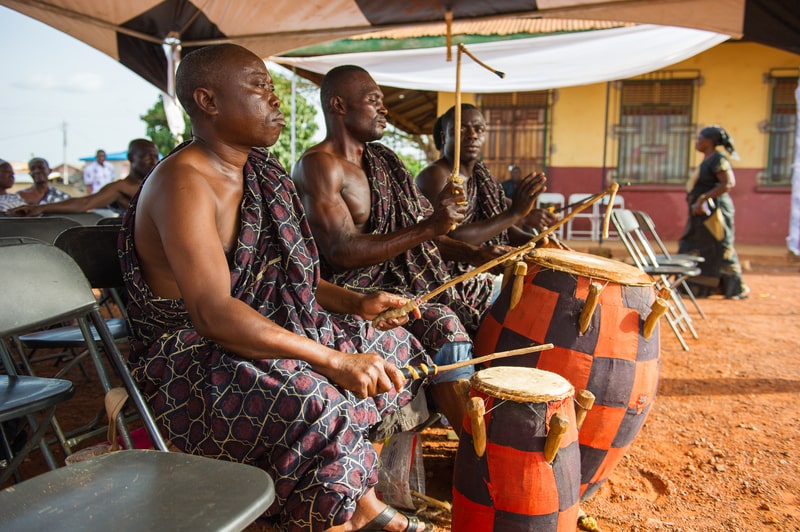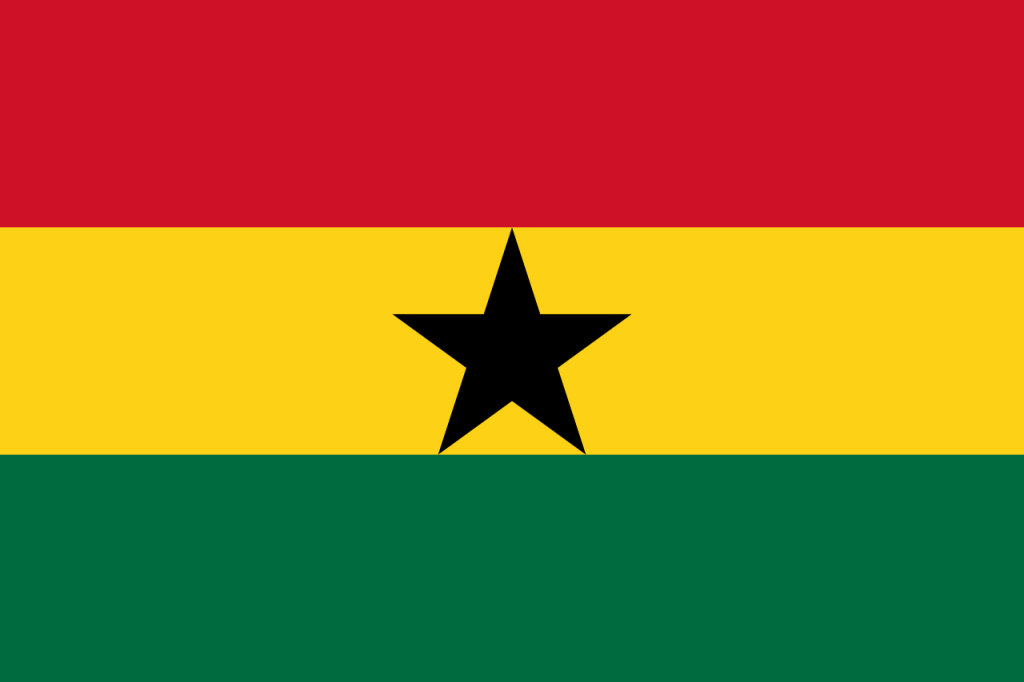Last updated on October 30th, 2022
Poverty in Ghana
31. Ghana struggles with poverty in the region due to its high population rate.
32. Most of the people living in the southern part of the country are considered rich than those in the North.
33. Overall poverty rates are declining in Ghana as compared to other countries in the Sub-Saharan Africa. Thus the country is considered to be the leading nation in Africa pin meeting the MDGs (Millennium Development Goals).
34. Agriculture is the major employer in the country thus most people are found farming their lands translating to high poverty rates.
35. However, the country struggles to be a middle income earning country due to its long political stability in the region.
About the economy and geography
36. The rate of economic growth has improved in 2021 as compared to that in the previous year.
Ghana on the map
37. The government has been involved in finding measures to restore sanity in the markets with more efforts on regulating, borrowing locally than abroad though the efforts are characterized by uncertainty.
38. Starting a business in Ghana has been made easy with the little bureaucracy involved and regulated business freedom.
39. The Ghanaian government is committed to removing all taxes on fuel among other subsidies in a bid to cushion marketing and other business minded people.
40. Foreigners are encouraged to invest in the country provided they are legally registered with the government.
41. Ghana is a West African country located in the Gulf of Guinea (see below.)

42. The country borders Burkina Faso to the North, Togo to the East and the Atlantic Ocean is to the South.
43. In comparison, Ghana covers an area which is slightly smaller than Oregon.
44. The capital City of Ghana is Accra which has a population of approximately 32,103,042 people (2022 est.)
45. The main Cash crop grown in Ghana is Cocoa.

Food and music in Ghana
46. Most of the Ghanaian foods are traditional reflective of the country’s history as well as agriculture.
47. The delicacy for most people is boiled cassava, plantains, and yams which are rolled into balls commonly known as fufu.
48. Most, if not all dishes in Ghana are spiced up mainly with chilies and red peppers.
49. Ghana boasts of having the largest open-air market in West Africa located in Kumasi where people go to buy clothes, fabric as well as garments.
50. Ghanaians celebrate a dancing festival held annually and most of their celebrities are known globally as not allowing their wealth or even statuses affect their daily living.
About the flag of Ghana

1. Design and Symbolism
Ghana is a populous West African country along the Atlantic coast. The flag of Ghana has three horizontal stripes of Pan-African colors: red, gold, and green. These first appeared on the flag of Ethiopia, but in reverse order. Other states soon followed their lead.
Red represents love for the country. It also points to the blood spilled for the independence movement. Gold stands for abundant mineral resources, and green signifies the rich forests and fertile farms. Ghana is a leading producer of cocoa, shea butter, timber, and food crops.
The star represents African emancipation. It comes from the flag of the Black Star Line, a shipping company that helped former slaves return to the continent from 1919 to 1922. The Jamaican political activist Marcus Garvey spearheaded the project. He wanted to improve the lives of black people, unite Africa, and end colonialism.
2. Adoption
Ghana adopted the flag on March 6, 1957, just as the country gained its independence. The artist Theodosia Okoh made the design. The government switched to a different banner in 1959 but reverted to Miss Okoh’s creation on February 28, 1966.
3. Technical Details
The flag dimensions have a ratio of 2:3. The colors have HEX values of CF0921 for red, FCD20F for gold, 006B3D for green, and 000000 for black.
According to the construction sheet, the star spans the full height of the golden band. It touches the edges of the red and green bars.
4. History
The Portuguese were first to arrive in 1471, followed by the British, Dutch, and Danes. Gold and slave trading flourished, thus the regional name of “Gold Coast.” After the slavery ban in the early 1800s, the economy collapsed, and the British took over. The Blue Ensign of the UK became the flag of the colony.
The African population was voiceless under the colonial government. In 1947, locals formed the United Gold Coast Convention and later the Convention People’s Party to campaign for Ghanian Independence.
In 1952, Kwame Nkrumah became the Prime Minister of the Gold Coast. Upon independence in 1957, its name changed to Ghana. It means “strong warrior king.” It is also the name of a former African empire that dominated the region from 300 to 1200 AD.
When it was time to make a national flag, Theodosia Okoh answered the call. She was an artist with international exhibits under her belt. She was also a chairperson of the Ghana Hockey Association and a patron of the Sports Writers Association of Ghana.
5. Flag Facts
The flag of Ghana is nearly identical to the flag of Bolivia, except for the presence of the star. The African nation also uses darker shades for its stripes.
The Ghanaian national football team is called the “Black Stars,” taken from the flag design and the iconic shipping line. Their current 2022 kits display the star prominently on the chest.
Ghana formed the Union of African States, with Guinea and Mali joining from 1958 to 1963. The organization modified the Ghanaian flag, including three stars to represent all members.
Ghana – country at a glance
| Independence | March 06, 1957 (from Britain) |
|---|---|
| Capital City | Accra (5°33′N 0°12′W) |
| Largest City | Accra (5°33′N 0°12′W) |
| Area | total: 238,533 sq km land: 227,533 sq km water: 11,000 sq km |
| Area - comparative | slightly smaller than Oregon |
| Population | 34,589,092 (2024 est.) |
| Official Language | English |
| Languages spoken | Akuapem Twi, Asante Twi, Dagaare, Dagbani, Dangme, Ewe, Ga, Gonja, Kasem, Fante, Nzema, Wasa, Talensi, Frafra |
| Literacy rate | total population: 79% |
| Religion | Christianity, Islam and others |
| Demonym | Ghanaian |
| Suffrage | 18 years of age; universal |
| Borders | Côte d'Ivoire, Burkina Faso and Togo |
| Currency | Ghana cedi (GH₵) (GHS) |
| Government type | Unitary presidential republic |
| President | John Mahama |
| Vice President | Jane Naana Opoku-Agyemang |
| Life expectancy at birth | 70.01 years (2024) Life expectancy at birth indicates the number of years a newborn infant would live if prevailing patterns of mortality at the time of its birth were to stay the same throughout its life. |
| Climate | tropical; warm and comparatively dry along southeast coast; hot and humid in southwest; hot and dry in north |
| Terrain | mostly low plains with dissected plateau in south-central area |
| Land boundaries | total: 2,420 km |
| Coastline | 539 kms |
| Mean elevation | 190 m |
| Lowest point | Atlantic Ocean 0 m |
| Highest point | Mount Afadjato 885 m |
| Natural resources | gold, timber, industrial diamonds, bauxite, manganese, fish, rubber, hydropower, petroleum, silver, salt, limestone |
| Agricultural land | 69.1% |
| National Anthem | God Bless Our Homeland Ghana |
| National holiday | Independence Day, 6 March (1957) |
| National symbol | black star, golden eagle |
| National colors | red, yellow, green, black |
| Birth rate | 27.6 births/1,000 population (2024 est.) |
| Death rate | 5.9 deaths/1,000 population (2024 est.) |
| Sex ratio | 0.96 male(s)/female (2024 est.) |
| Industries | mining, lumbering, light manufacturing, aluminum smelting, food processing, cement, small commercial ship building, petroleum |
| GDP - per capita (PPP) | $6,800 (2023 est.) |
| Exports | $25.365 billion (2023 est.) gold, crude petroleum, cocoa products, manganese, cashews (2019) |
| Imports | $26.024 billion (2023 est.) metal tubing, ships, cars, refined petroleum, rice (2019) |
| Internet country code | .gh |
| Time Zone | GMT (UTC+0) |
| Calling Code | +233 |
| Drives on the | Right |
| Table last updated | February 21, 2025 |
